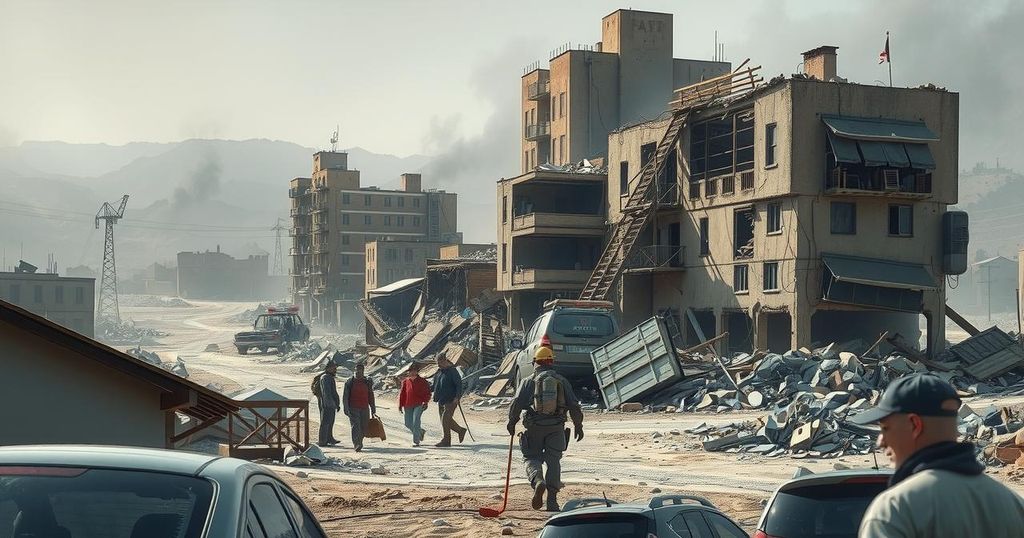Myanmar Earthquake: Death Toll Forecasted to Exceed 3,000 Amid Humanitarian Crisis

The earthquake in Myanmar on March 29, 2025, has resulted in over 2,000 deaths, with projected fatalities expected to exceed 3,000. Rescue operations are ongoing but face significant challenges due to supply shortages and ongoing civil conflict. International aid efforts are in progress, yet the situation necessitates immediate attention and cooperation to address the humanitarian crisis affecting the region.
On April 1, 2025, reports indicate that the death toll from a recent earthquake in Myanmar is projected to surpass 3,000, highlighting a disastrous humanitarian crisis exacerbated by ongoing civil conflict. The 7.7 magnitude quake struck on March 29, 2025, resulting in the death of over 2,000 individuals, with at least 441 more still unaccounted for, as stated by General Min Aung Hlaing, leader of Myanmar’s military junta.
Rescue efforts continue with diminishing hope of finding survivors, as the United Nations’ Office for the Coordination of Humanitarian Affairs (OCHA) describes the situation as critical. With essential supplies such as shelter, clean water, and medicine scarce, many are left to endure the harsh conditions outdoors without basic amenities. Julia Rees, UNICEF’s deputy representative in Myanmar, notes that the acute shortages are escalating rapidly, and the potential for lifesaving responses is dwindling.
The quake has resulted in widespread devastation, with over 10,000 structures reported as collapsed or severely damaged across central and northwest Myanmar. Notably, the tremor also affected Thailand, where a construction site incident led to casualties. In Bangkok, two fatalities have been confirmed among workers entangled in a partially collapsed high-rise building.
Search and rescue operations have yielded some success, including the extraction of a 63-year-old woman from rubble 91 hours post-earthquake. In Mandalay, authorities report 403 rescues and 259 bodies retrieved, with tragic loses among those engaged in religious studies. Slow foreign aid progression poses additional challenges, yet teams from various nations including Russia, China, and India have commenced participation in search efforts.
The U.N. has expressed concern over water shortages, anticipating potential cholera outbreaks due to deteriorating infrastructure amidst the climate crisis. Prior to the natural disaster, more than 3 million people had already been displaced due to the civil war, with imminent health risks heightening substantially.
Despite the ongoing violence, the National Unity Government (NUG) has called for a ceasefire to facilitate humanitarian efforts, asserting the necessity of unimpeded aid delivery. The international community has been urged to remain vigilant against possible military obstruction of aid supplies, fostering a desperate race against time to alleviate suffering in the wake of the earthquake.
The recent earthquake in Myanmar has led to a catastrophic humanitarian crisis, with expected fatalities surpassing 3,000. The ongoing civil war complicates relief efforts, further exacerbating the struggle for essential resources such as water and medical supplies. While international aid is beginning to trickle in, the urgency of the situation calls for immediate and unhindered humanitarian assistance to prevent further loss of life.
Original Source: www.news9.com







